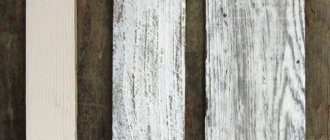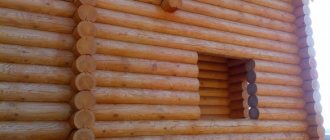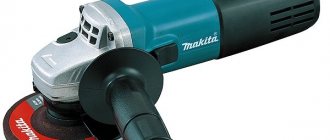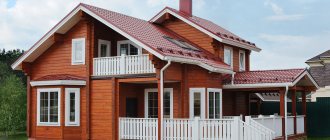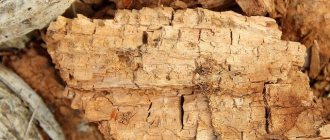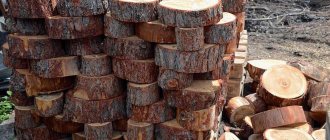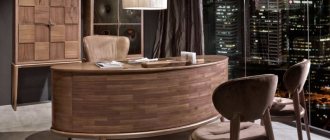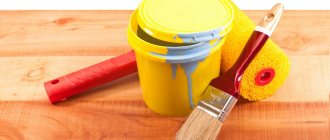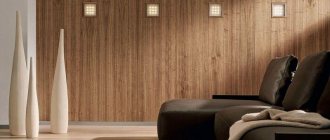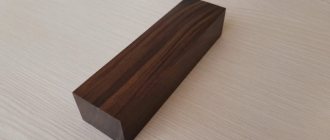Artificially aged wood is a unique finishing material. Practical, inexpensive, fully retaining its strength characteristics, but at the same time possessing original beauty and antique charm. The scope of application of such wood is wide: interior design, furniture manufacturing, finishing of facades, gazebos, stairs, even fences are made from it. The most important thing is that wood processing does not require special knowledge or experience, and anyone can do it. Let's take a closer look at how to age wood on your own, and what you need for this.
Artificially aged wood
Wood aging methods
There are three effective ways to age wood - mechanical, chemical and thermal. Depending on the chosen method, the end result has certain differences.
The mechanical method includes two types of processing - brushing and patination. Both types can be used together or separately, depending on the material and the desired result:
- brushing - the surface is treated with a wire brush to remove soft fibers and expose the annual rings. As a result of this treatment, the top layer acquires a pronounced relief, which is further emphasized by applying glaze compounds. This method is the most labor-intensive and is used mainly for hard wood - pine, larch, spruce, oak, walnut;
Wood brushing
- patination – surface treatment with coloring compounds followed by polishing. It is used for soft species, as well as wood with a weak texture - maple, cherry, beech and others. Wood wax and stain can be used along with paint to give a brighter pattern.
Patination
The chemical method involves treating the top layer of wood with various compounds that change the color of the fibers. Ammonia and products containing alkali, such as stove or drain cleaner, are suitable for this. This method can only be used for species containing tannins, that is, deciduous. Chemical treatment of coniferous wood will not give the desired effect.
The thermal method involves burning wood with a gas torch or blowtorch. The type of tree does not matter. They do not burn it too much, just so that the texture of the fibers appears more clearly, and then remove the carbon deposits with a metal brush. Next, cover the surface with stain or varnish to give the wood a more decorative appearance. In general, the process is not complicated, but it requires caution and compliance with safety precautions.
Burner-aged wood
Aftercare
After finishing decorating with the effect of aging wood, it is important to follow the recommendations of specialists. Properly aged items do not require complex care
Dry cleaning with a vacuum cleaner once a month is enough, as well as wiping the most contaminated areas with a damp cloth. To enhance shine, additionally coat with glossy varnish or use special furniture polishing products. Leather inserts and furniture nails with copper heads require impregnation with special compounds. Sanded wood with stain without painting can be treated with mastic or wax-based polish. Additional preservation of the product will significantly extend its service life and help protect it from the destructive effects of temperature changes and high humidity. Rub the wax surface with a soft rag or flannel mitten. Tabletops, handrails of sofas or armchairs (other surfaces of intensive shock absorption) require additional treatment with protective varnish
It is important that its base is compatible with the previous coating. For example, acrylic composition cannot be applied to nitro varnish, they react. A tabletop with a mosaic pattern can be additionally covered with flexible glass and the ends treated with silicone sealant.
Furniture care
Brushing technology
Brushed wood
Tools and materials for processing
During the work you will need:
- hand plane;
- chisel or small hatchet;
- steel brush;
- Angle grinder with brush attachments;
- sandpaper, coarse and fine;
- paint brushes;
- dense sponge;
- tinting antiseptic for wood (for example, Pinotex);
- white azure;
- soft bristle brush.
Wood brushing machine with two support rollers
Brushes for three-stage wood processing
Necessary materials
Prices for cordless drill/driver
Cordless drill/driver
Rough cleaning should be done with a steel bristled nozzle, but for finishing, nylon and copper are better suited. There is a special attachment called “Piranha”. It is a polymer-abrasive brush that can effectively remove soft fibers from the surface and leave hard ones. The grinder can be replaced with a drill; such attachments are also available for it. As a last resort, you can get by with hand tools, but this is time-consuming and tedious.
Piranha brush
The wood should be dense, strong, not damp. Resinous boards should also not be taken, as the resin makes processing difficult. The presence of knots is welcome, as they make the design more pronounced and decorative. If you have no experience in such work, take a small piece of unplaned board or timber, up to half a meter long.
Wood processing
During such work, a lot of fine dust is always generated, so it is best to do it in the fresh air. If the weather does not allow it, take care of the possibility of ventilating the room and be sure to prepare a protective mask or at least goggles.
Step 1. The workpiece is laid on a flat surface and processed with a hand plane. It is better not to use an electric tool, as it leaves small transverse stripes, which reduces the naturalness of the design.
Wood processing with a plane
Step 2. Using a chisel or the corner of an ax, you need to make chaotic chips across the entire surface, shallow and shapeless, to give the material a rougher appearance.
Step 3. Now you need to remove the soft fibers with a wire brush. The brush should only be moved along the grain, pressing the tool firmly against the board.
Brushing
This is what wood looks like after brushing with a wire brush.
Advice. To reduce dust formation, it is recommended to slightly moisten the surface of the workpiece with water. But before sanding and impregnation, the wood must be dried.
This is what it looks like after intermediate sanding with a polymer brush.
And this is how it looks after final sanding and polishing with a sisal brush
Step 4. When the relief begins to appear, the hand brush is replaced with an angle grinder with a metal brush, and work continues. The nozzle should be positioned perpendicular to the surface being treated, movements should be made strictly along the fibers. If you don’t need too rough a texture, immediately take a Piranha brush or a nylon-bristle attachment and do not press too hard on the tool while working. Go around the perimeter of wormholes and knots in the tree to emphasize the contours.
Wood processing
Process the ends of the board
Step 5. Use a soft brush to sweep away the resulting dust, and then begin sanding. You can sand the wood manually or using a grinder, the main thing is to remove protruding fibers and sharp protrusions. Finally, clean the workpiece from dust again.
Step 6. Now the material needs to be given color. To do this, the surface is first coated with Pinotex primer, which is applied with a brush along the grain. You can use both stain and dark azure - any coating with color that will not hide the texture.
The photo shows an example of the coloring composition used
Step 7. Having applied the composition to the workpiece, give it a few minutes to absorb, and then carefully wipe off the top layer with a sponge. There is no need to rub hard, just smoothly move it 2-3 times along the fibers. After this, all the recesses will remain darker than the protruding edges, and the relief will appear more clearly.
Avoid drips
A distinctive feature of good quality stains is that they reveal the texture of wood
Rub the composition into the workpiece
After drying, the painted surface looks like this:
Then there are two options: leave this color and cover the wood with a transparent varnish, or add another layer and give the material the appearance of old bleached wood. The second option is suitable for processing elements in the Provence style. To do this, you need to wait until the impregnation is completely dry and apply a very thin layer of white glaze with a brush. After it has dried, the wood is lightly sanded with the finest sandpaper, cleaned of dust and coated with colorless varnish.
Do-it-yourself aging of wood
This method is also used: after brushing, the workpiece is covered with a dense layer of white glaze, dried and brushed again with a metal brush, but now not so intensively. Finally, a layer of clear varnish is applied.
Applying white paint
Brush sanding
Brush sanding
To make dark wood rather than bleached wood, instead of white glaze, the surface is thickly covered with stain or Pinotex, and the layer is made uneven. Next, use a brush or sandpaper, depending on the finish you want. Sanding produces light, blurry abrasions, but after brushing, rough grooves remain and the wood looks more brutal.
Aged wood, well-emphasized ax grooves
Prices for different types of stains
Stains
Selecting a pre-treatment agent
A separate category consists of impregnations, which are necessary to improve the structure and durability of wooden elements.
Such mixtures include:
Drying oil. It is applied to protect the base from any harmful influences. It is better to lay several layers to achieve deep penetration. Can be used before oil paints to reduce their consumption.
The oil is ideal for processing wood indoors with temperature changes and high humidity.
Special antiseptics. Protect from microorganisms and insects, prevent rotting.
Fire-retardant composition for wood Phenilax
How to do patination
Primary processing is carried out using the technology described above: soft fibers are removed, relief is given and the surface is polished. Only after this the workpiece can be patinated.
Step 1. Take any wood primer and carefully apply it to the wood with a brush. The primer should penetrate well into all grooves and recesses. Allow the workpiece to dry.
Apply primer
Step 2. Apply the first coat of paint. Acrylic paint is best suited because it is not prone to peeling, adheres well to the surface, and does not leave streaks.
We apply paint on the photo composition of smoky color)
You can choose any shade of paint you like
Application of white paint, example
The choice of color depends only on your preferences; you can take any shades, the main thing is that they are rich and contrast with the patina shade. The paint is applied with a brush, evenly distributing the composition in a thin layer. The base coat must dry completely, so take a break from working for a day.
Take a break from work
Step 3. Sand the workpiece with fine sandpaper. Wipe off the dust and apply a layer of patina with a brush. It is best to choose a patina for wood in the color of bronze or gold, with a metallic tint. Here it is not necessary to distribute the paint evenly; on the contrary, the difference in coating density will only emphasize the aging effect.
Grinding
Sanding emphasizes the texture of the wood
Wood after processing
Step 4. When the patina begins to set, you need to take a dry cloth and wipe down individual areas. After the paint has dried, the wood is coated with clear varnish.
Applying varnish from a spray gun
Effectively aged wood
Types of patina for wood
| Type of composition | Characteristics |
Acrylic patina | Water-soluble composition, characterized by slow drying, odorless and a wide variety of shades. Easy to apply and shade, ideally highlights the surface texture |
| Wax patina | A very thick composition with a pearlescent sheen. Apply to protruding areas with a dry brush, and into recesses with a sponge. Easy to rub and gives maximum antique effect |
Bituminous patina | The composition is dark brown, most often used to shade relief. Easy to apply with a brush, does not smear, wipes well with a soft cloth |
Oil patina | It has a paste-like consistency and is applied with a dry brush or thick cloth. It is considered the most optimal option for patination of wood |
What paint do we use?
Traditionally, whitewashing was used as a cheap and easy way to protect wood (lime has antibacterial properties) and give it a neat appearance. Nowadays, when we recreate a whitewash, it is usually done with any water- or acrylic-based white paint for interior or exterior work (which is what we will do in the methods described here).
Water-based or acrylic paints without odor!! and can be used indoors
Thermal aging
First of all, take care of safety precautions. When burning wood, there should be no flammable objects or liquids nearby, and it is better to generally carry out such work in the fresh air. Be sure to check the serviceability of the burner or blowtorch.
Prices for various types of gas burners and blowtorches
Gas burners and blowtorches
Step 1. The workpiece is placed on a non-flammable surface or placed vertically, after which it is fired with a burner. The material is processed as evenly as possible, the top layer should be charred approximately 2-3 mm in thickness.
Processing wood with a torch
Technique for burning wood with a blowtorch
Thermal aging method
Step 2. After cooling, the charred carbon deposits are removed manually with a brush or using a grinder. The intensity and duration of this treatment depends on the desired texture.
Sanding burnt wood
Step 3 . Having formed the desired relief, take the grinding attachment and process the workpiece again. Here it is important not to overdo it and not remove excess, otherwise the aging effect will be insignificant.
Step 4. Since the color of the wood changed during firing, dark and light areas appeared, there is no need for painting. Now all that remains is to coat the material with colorless varnish or protective impregnation.
Thermally aged wood
Recommendations and tips
Now that we've looked at all 7 methods of painting wood with an antique effect, I'd like to highlight a few basic tips that you can apply to all methods:
- If the surface you are going to paint has been treated with sealant, wax or varnish, it would be best to sand it a little so that the new paint will adhere better.
- Don't be afraid to experiment; you can mix and match these techniques to create your own personal design style.
- first on a piece of wood or on less visible areas of furniture (such as the inside of a cabinet door to be painted) before moving on to more visible parts.
And remember that the main thing here is your desire! Good luck!
Chemical aging method
The use of chemically aggressive substances requires special care and precision in work. Protective gloves must be used and the room must be well ventilated. The workpiece is pre-treated with coarse sandpaper and wiped from dust. Then apply alkaline agents or ammonia with a brush and leave for several hours. To slow down drying, you can cover everything on top with film. Under the influence of ammonia and alkalis, the surface acquires a gray tint, characteristic of old weathered wood.
Chemical aging method
When the color of the workpiece has completely changed, it is rinsed with water and then wiped with a vinegar solution (a tablespoon per glass of water) to remove the remaining alkali. If ammonia was used, a vinegar solution is not needed. After drying, the wood is brushed, sanded and a protective coating is applied. There is no need to paint such material, because then there is no point in chemical processing, and it is easier to do everything mechanically.
Artificial aging
Dry brush texture "Loft"
This technique is great for creating an old and scratched look. The key to success here is simply to use a very dry brush. For example, old brushes with stiff bristles work well.
Necessary materials:
- brush with stiff bristles,
- water based paint.
Instructions:
This is what the process looks like:
- Dip the brush into the paint of your choice and leave as little paint on it as possible.
- Apply the paint in quick strokes in different directions. Be careful not to get carried away and cover the entire surface.
This technique is also suitable for painting with a loft metal effect, for example, for creating such artificial zinc letters.
You can also combine this method with using sandpaper to remove some of the paint after each coat.
External use of aged wood
This decorative material is perfect for decorating rustic-style facades. First of all, this is the German half-timbered style: the original decoration of the walls involves the use of wooden beams of rough texture, giving the building a characteristic appearance.
Country-style finishing also allows for the use of aged wood: the cladding itself, shutters, entrance doors, as well as decorative elements.
Half-timbered
Aged door leaf
Aged shutter fabric
Railings, steps, support pillars at the porch - all this can also be made using the described wood processing methods. After practicing on small pieces, you will be able to handle any surface without much effort. Of course, large-volume elements, such as house trim, are not so easy to process manually, but there are special machines on sale for this purpose. The most important thing is to have the desire, and then everything will definitely work out.
Video - How to age wood
Video - Patination of wood
Video - Aging wood by firing
How to paint wood-effect doors with white paint yourself
Does your old door not look the same anymore? Don’t despair, you can easily restore it yourself, without significant financial investments.
In this case, simply painting the surface is used, after which the appearance will be improved, you can also use a template that will give an ordinary door a wooden look. But before you start painting the surface, you need to know what kind of painting material is suitable, and then find out how to paint wood-like doors.
Paint selection
Based on what exactly will be done with the door, you need to choose the right way to paint the door. In this case, there may be two methods of doing the work:
| Door design method: | Materials used: |
| Highlighting wood texture: | In this case, it is better to paint the surface with clear varnish, oil impregnations or stain, and also use tinting mixtures. |
| Complete removal of the old door surface pattern and application of a new one: | If you need to create a new design that will imitate wood, then the paint should be wood-like, based on an acrylic, polyurethane or oil composition. |
How to paint a door with your own hands (video)
Surface preparation
Having selected the necessary materials for painting wood-look doors with enamel, you will need to prepare the surface, and then apply a drawing of the structure of the wooden fibers. It is always necessary to prepare the surface by removing old paint or varnish, using a grinder or sandpaper.
To paint interior doors Canadian wood, as well as other types, you need to bring the surface to perfect condition. To do this, use a sander or sandpaper with small or medium grain. If there are cracks, holes or other flaws, it is necessary to additionally putty the surface using a wood compound. This condition is mandatory, but when using transparent varnish, the color of the putty should match the color of the wood itself. When the mixture dries and hardens, it must be sanded. After which the preparation is completed and you can proceed to coloring.
It should be immediately noted that an imitated wood pattern can be applied to almost any material. This could be a metal entrance, plastic or plastic, on a steel sheet, etc. the main difference lies in surface preparation.
Painting the door
Door painting is carried out using the following technology:
- White fabric dye is used and the surface is completely painted.
- After this, you need to cover the material with liquid soap. Before you paint a white wood-look door with your own hands, you will need to leave the canvas for the base layer to dry. As a rule, the drying time is indicated in the instructions.
- Next, you need to use dark enamel and cover the surface with it to create curls like wood fibers, while the liquid soap is washed off. After the work, the dissolved enamel dries and makes the necessary pattern.
An interior passage made from real wood is expensive, so you need to consider the option of creating an imitation on plywood. In this case, you will need an additional brush. With its help, the fabric is “combed” along the soft fibers. After which you can paint the surface in any color from white to dark. Next, the applied dye will spread and create the desired texture, which will resemble real fiber.
For plywood, it is better to use several shades at once, as this will allow you to create the desired pattern. When the enamel is dry, the plywood is sanded. You can see how to paint a steel door to look like wood in the video, although airbrushing can also be used.
In conclusion, based on the information described, it should be noted that creating an imitation of wood fiber allows you to emphasize home comfort. Despite the different materials, there are still general requirements; the main rule is the choice of suitable materials for the job. For example, if you just need to emphasize the fibers of real wood, then it will be enough to use impregnations. When using varnish as a finishing material, use stain, but not drying oil.
You also need to remember that many materials perfectly absorb paints and varnishes, so it may be necessary to treat the surface in 2-3 layers. It is recommended to use the color “Alder” for interior doors; a Canadian door is perfect for it. If the interior is dark, then it is better to use the color “Venga”.
Preparing for coloring
Before painting a clapboard ceiling with dark stain or any other coloring agent, you need to carefully prepare the base. The old ceiling covered with clapboard is cleaned of dust, dirt and other small debris. If you have painted lining on the ceiling and the paint layer does not adhere firmly to the base, then it is better to remove it. To do this, use a spatula or sandpaper. You can also use a sander.
After this, carefully inspect the surface for various defects. If there are damaged slats, they need to be replaced. Small cracks and cracks can be filled with wood putty.
When the putty has dried, sand the surface using sandpaper or a sander. This is necessary to eliminate minor irregularities in the area where the putty is applied. After this, the surface is dusted and treated with a primer. The composition is applied with a brush or roller in two layers. Before applying the second layer, the first layer must be completely dry.
Tools and materials
To paint a lining ceiling you will need the following tools and materials:
- roller or brush with a long handle;
- a set of spatulas of different widths;
- tray for paint and primer;
- sandpaper or sander;
- antiseptic impregnation;
- ladder;
- putty;
- primer composition;
- paint that matches the color;
- water bucket;
- metal brush;
- masking tape;
- polyethylene film;
- a rag to remove dust from the surface.
To paint the surface of a eurolining ceiling, it is better to use a brush, because it is inconvenient to paint all the recesses between the individual elements with a roller. And to work on a ceiling surface covered with Shtil clapboard, you can use a roller. This is due to the fact that there are practically no gaps between the boards and the entire surface of the ceiling is even and smooth.
Painting technology
Now let's look at how to paint a lining ceiling white or any other shade.
We carry out the work in the following sequence:
- If at the preliminary stage you did not remove pieces of furniture from the premises, then this needs to be done now. It is better to cover the floor with plastic film to protect against accidental ingress of paint.
- After this, we cover the top of the wall surface with masking tape to protect the finish from staining.
- Pour the paint into the tray after mixing it well in the jar. Using a brush, we paint hard-to-reach areas at the junction of the wall and ceiling surfaces, as well as the ceiling behind the water supply and heating risers.
- After this we work with a roller. Dip the tool into a tray of paint and roll the roller along the ribbed inclined surface of the tray to squeeze out excess paint.
- We begin to paint the ceiling with a roller. We paint the first layer in the direction perpendicular to the window opening in the room. We make forward-return movements with the tool, but in no case chaotic. If the surface is poorly painted in the seams between the boards, go over there with a narrow brush.
- After the first layer of paint has dried, we paint the ceiling again with a roller, but move the tool along the window. We also paint hard-to-reach areas with a brush.
